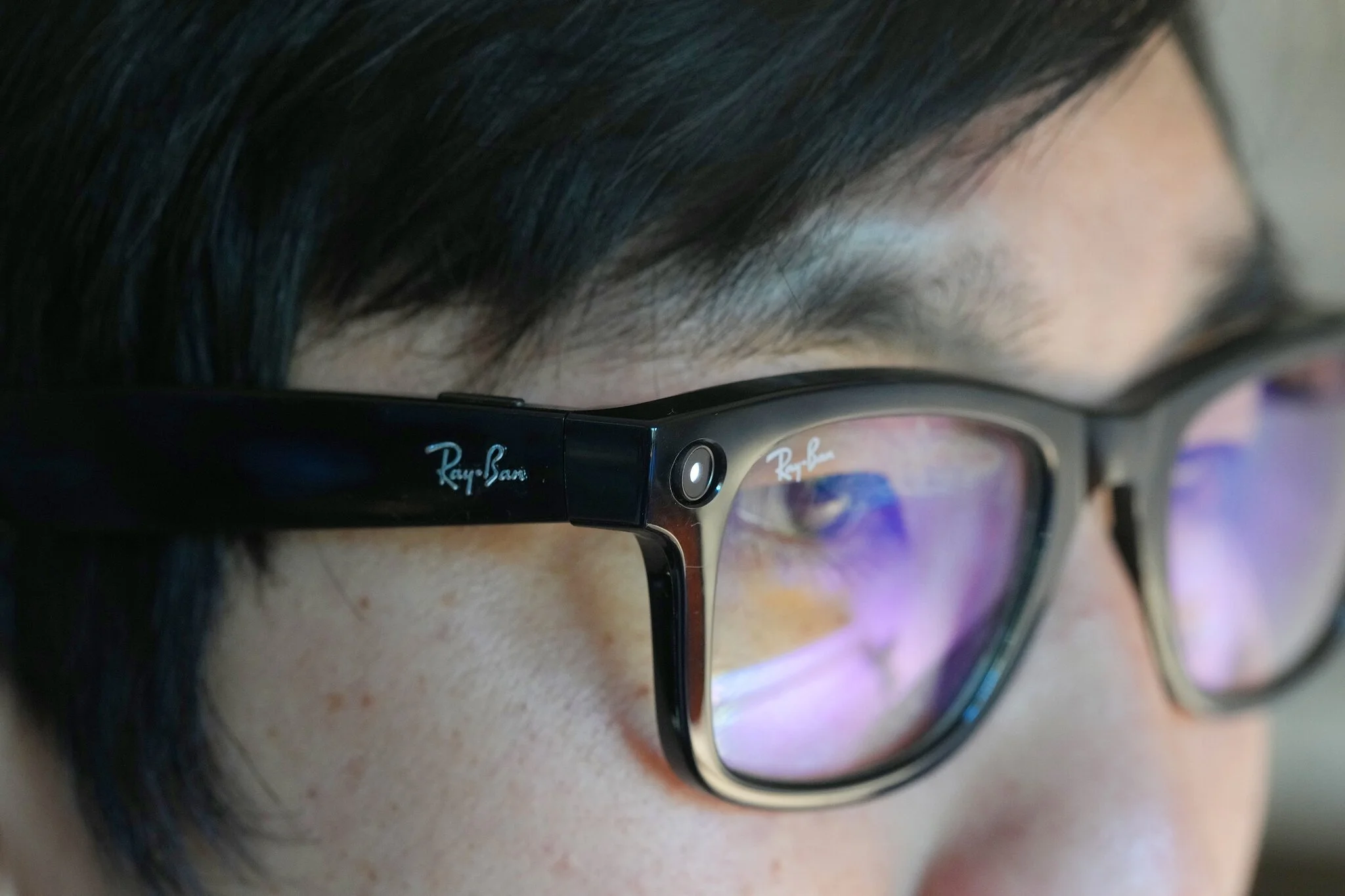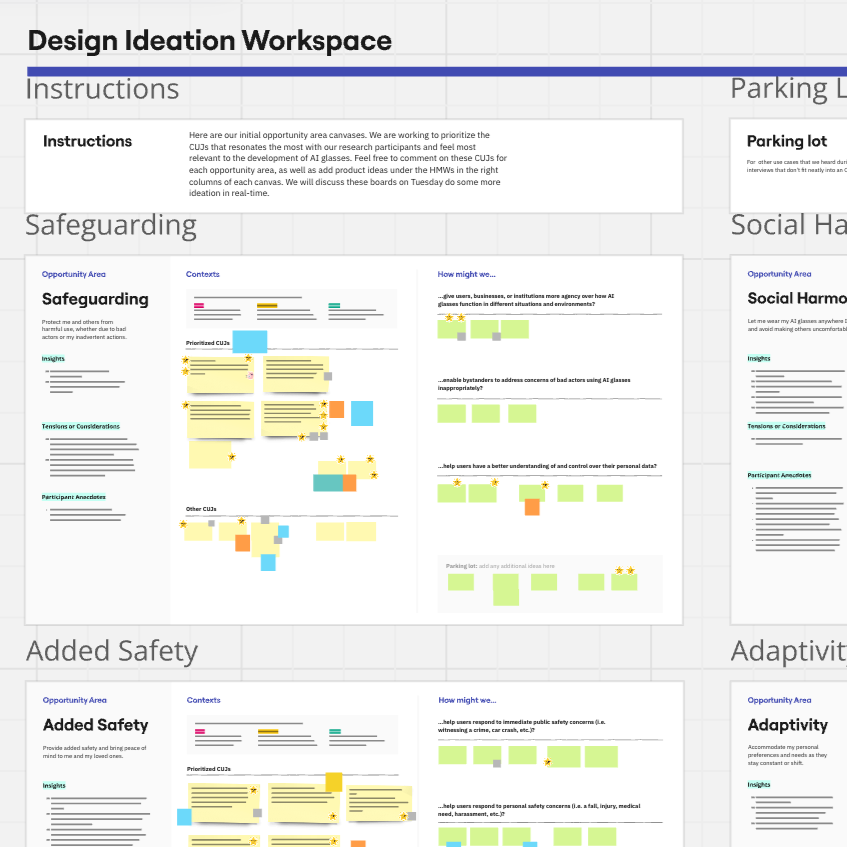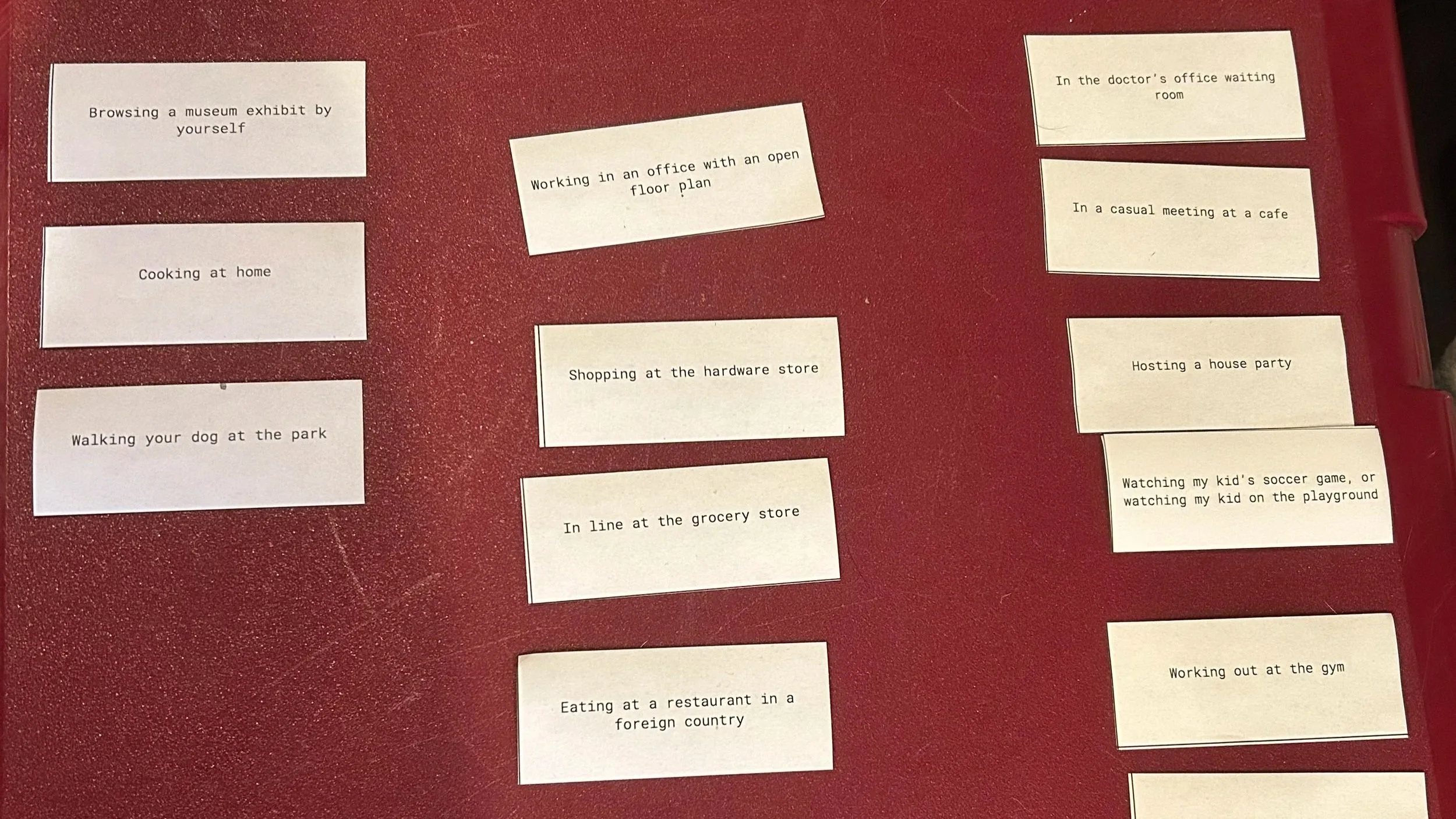
Addressing privacy concerns of AI glasses
Contextual inquiry and role-playing exercises uncovered challenges and opportunities for driving acceptance of AI glasses.
AI glasses like Ray-Ban Meta are a promising platform for a personal AI assistant because the AI is always available and able to see the world as you experience it. But those same qualities raise concerns: user mistrust in these products is high, and a fraction remain in use a few months after purchase. A consumer electronics company seeking to enter the AI glasses market believed that centering privacy and accessibility could be key differentiators, but what might that entail?
We engaged 24 people in the US and 5 subject matter experts to understand expectations and reactions around the use of AI glasses, with a focus on privacy and accessibility. To provoke first-hand thoughts and feelings around the nature of privacy and use of AI in public spaces, we asked participants to use Ray-Ban Meta glasses across a range of environments and contexts. Follow-up conversations and exercises further explored these and other themes with participants. Insights informed concepts and critical user journey narratives illustrating why and how to center privacy and accessibility.
Role: Research advisor, team of 5
Duration: 3 months
Output:
Research Report describing insights & opportunity areas
“Postcards from the field” describing daily updates during research to keep key stakeholders informed
Alignment Workshop to align with the core team the final positioning, narratives and concepts
Narratives / Concepts delivered as medium-fidelity feature / affordance sketches and high-fidelity storytelling
As research advisor, I…
Advised project team on research goals, approach, and activities
Coached a junior researcher to facilitate sessions while supporting as their note-taker
Provided technical and strategic expertise on AI and AI glasses
Guided team through synthesis, ensuring insights connected to meaningful design opportunities
Approach
Immersion & Planning
Align with client stakeholders and conduct SME interviews to define research approach and hypotheses
Contextual inquiry dyads
Understand expectations, reactions, and barriers to the use of AI glasses by observing real-world use, role-playing key scenarios, and other activities
Analysis & Synthesis
Identify opportunity areas and facilitate alignment with key stakeholders
Envisioning
Defining concepts and critical user journey narratives illustrating why, what, and how to center privacy and accessibility
Understanding attitudes around privacy required participants have first-hand experience as both user and bystander.
We asked participants to use Ray-Ban Meta glasses in authentic public contexts as well role-playing structured scenarios to give them first-hand experience with an otherwise unfamiliar technology. This allowed participants to share authentic thoughts and feelings rather than speaking about privacy in abstract terms.
Structured activities helped participants discuss abstract concepts and emerging technology.
Concepts like privacy and the capabilities of future AI glasses are very abstract, making it potentially difficult for participants to form and articulate a perspective. A card sort activity helped participants identify situations in which they were not comfortable with the use or presence of AI glasses, and why. A “letter to the maker” asked participants to summarize their thoughts at the end of the session, reflecting what they believed to be the most important takeaways for our client to understand.

Research illuminated how privacy concerns and opportunities to promote trust extends beyond device features and behavior.
AI glasses are often seen as context-specific, temporary tools rather than all-day wear. People assume they’re worn for a specific reason rather than for vision correction or fashion. The more glasses are perceived as context-specific, the more unsettling they are in unclear or inappropriate settings. If they transition into being seen as all-day wear, similar to prescription glasses, people may become less concerned.
A significant barrier to this shift could be workplace restrictions. In corporate settings, companies might prohibit AI glasses due to concerns about accessing sensitive material or violating non-disclosure agreements. Similarly, service employees in public-facing roles, such as in grocery stores or restaurants, may face bans on wearing AI glasses due to the discomfort they might cause customers. These workplace limitations could hinder their adoption as all-day devices.
Final storytelling and positioning illustrated why and how our client could center privacy and accessibility.
The final deliverable included key insights related to privacy and conceptualized product concepts that were bucketed into 4 opportunity areas that represent potential ways for the AI glasses to deliver value.






